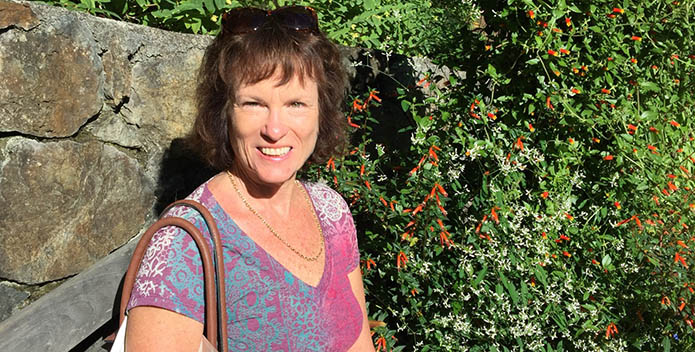Hi, I'm Lisa Feldt, the new vice president of the Environmental Protection & Restoration department at the Chesapeake Bay Foundation (CBF). I'd like to share a little of my story.
Over the course of the last month, many people have asked me what prompted me to join CBF.
My answer is I believe that coming to CBF is a natural progression in my career. My whole professional life I've been developing certain skills necessary to tackle big environmental problems. I've also loved the water, having grown up by all sorts of local streams, rivers, estuaries, and the ocean. For the last five years, I have continued loving the water. Now, I have the opportunity to use what I've learned and experienced in my professional and personal life to help finish the job of saving the Bay.
While great progress has been made on the Bay and we are starting to see tangible results of that progress, a lot of hard work lies ahead. We are going to have to continue working together with all the partners around the Bay. The partnership is vast and strong.
But let me back up.
I started my career out of college as an environmental engineer, working at the U.S. Environmental Protection Agency (EPA). I was placed in the Superfund Program in the early 1980s, dealing with some of the most toxic hazardous waste sites in the country. I even worked on the notorious Love Canal case. But those were exciting times, too. I cut my teeth with people like Lisa Jackson who went on to become the EPA administrator.
After that job, I landed in other positions at EPA and the Department of Energy facing new and equally daunting clean-up challenges: radon, nuclear waste disposal, and more. Then, I started my own environmental consulting company working with Fortune 1000 companies. I went back to the EPA at the request of the Obama Administration, working for the agency for five years as associate deputy administrator and then acting deputy administrator. And most recently, I was honored to lead the Montgomery County, MD Department of Environment with its $126 million budget and nationally recognized green agenda.
Through all these positions, I learned to listen carefully—to victims of pollution, scientists, business executives, community members, and environmental advocates. This broadened my horizons.
Another formative event happened about five years ago. My husband and I moved to the banks of the West River in Anne Arundel County, MD. The West River is beautiful. It's a favorite spot for everyone from commercial crabbers to sailors who want a quiet anchorage. I too, became attached as I sailed and kayaked its waters. From being on the water, near the water, I developed such a powerful affection for the Bay. And a concern.
No doubt, the regional plan to clean up the Chesapeake has been remarkably successful. It is known within the environmental world as an international model. But that plan, what we call the Chesapeake Clean Water Blueprint, is entering perhaps its hardest phase. The road to the finish line rises steeply.
Much of the progress we've made has been achieved by upgrading sewage plants and reducing agricultural pollution. Now, we must accelerate the gains on farms, especially in Pennsylvania. Also, we must find a way to deal with urban stormwater runoff, the only major source of Bay pollution rising in many areas. These are vexing challenges, requiring considerable resources, innovation, and political will. Climate change also makes our work considerably more difficult, as storms bring more polluted runoff, and coastal marshes and towns alike go underwater.
Where better place to be now than the Chesapeake Bay Foundation? My new position puts me at the center of Bay advocacy and the nexus of policy deliberations and actual hands-in-the dirt (or the water) restoration work like planting trees and building oyster reefs.
We must hold the system accountable for continued progress on the Blueprint, in meeting the goals of the Bay Agreement between the EPA, states, and D.C. We can't let down our guard. We have to remain focused working in collaboration with the states, local governments, and all our amazing partners.
Whatever your job, your political leanings, wherever you live, we all can agree on the need for clean air, clean water, and clean land. Let that be what unites us as together we finish the job we've started.
Lisa Feldt, Vice President of Environmental Protection and Restoration



